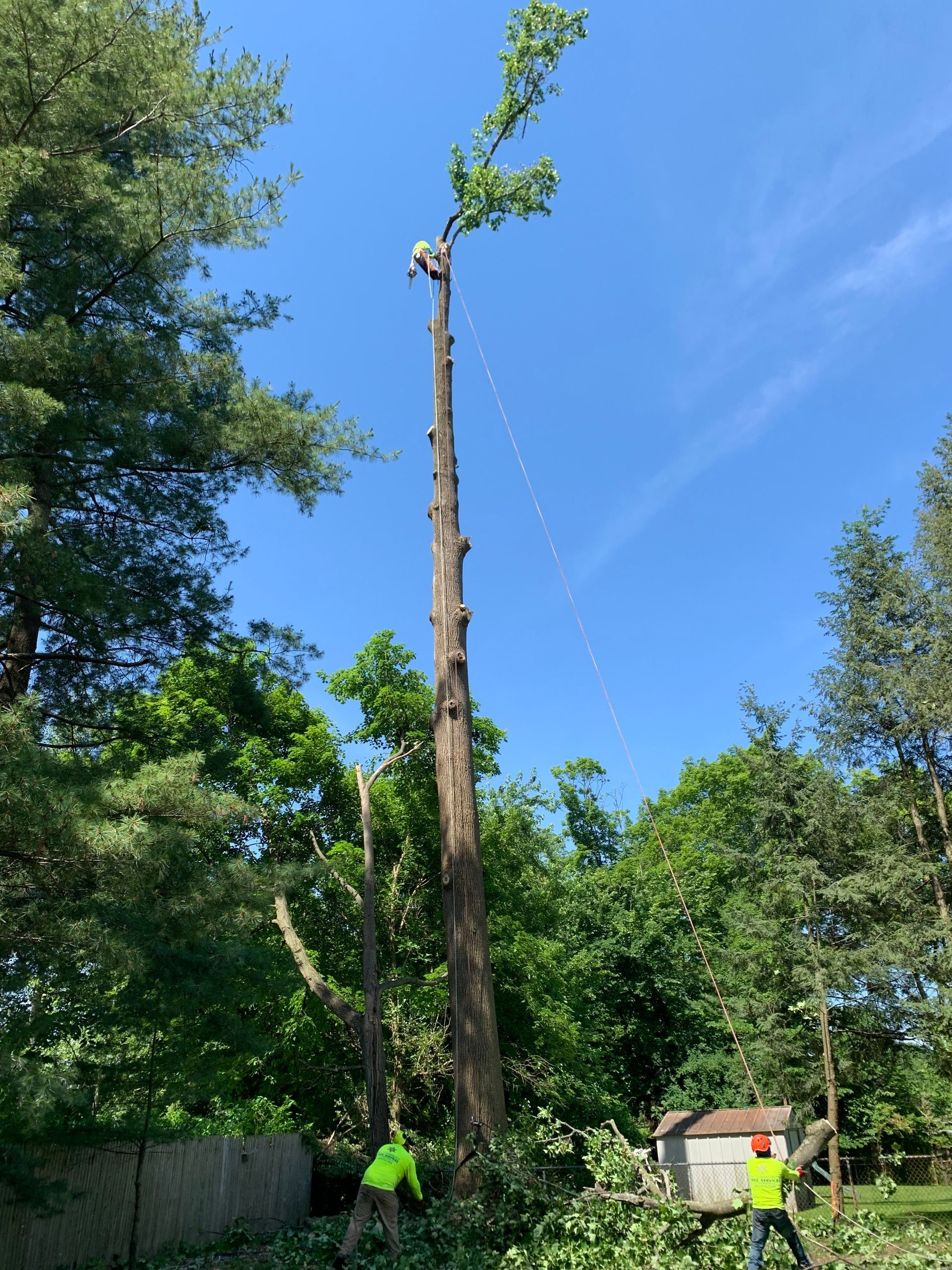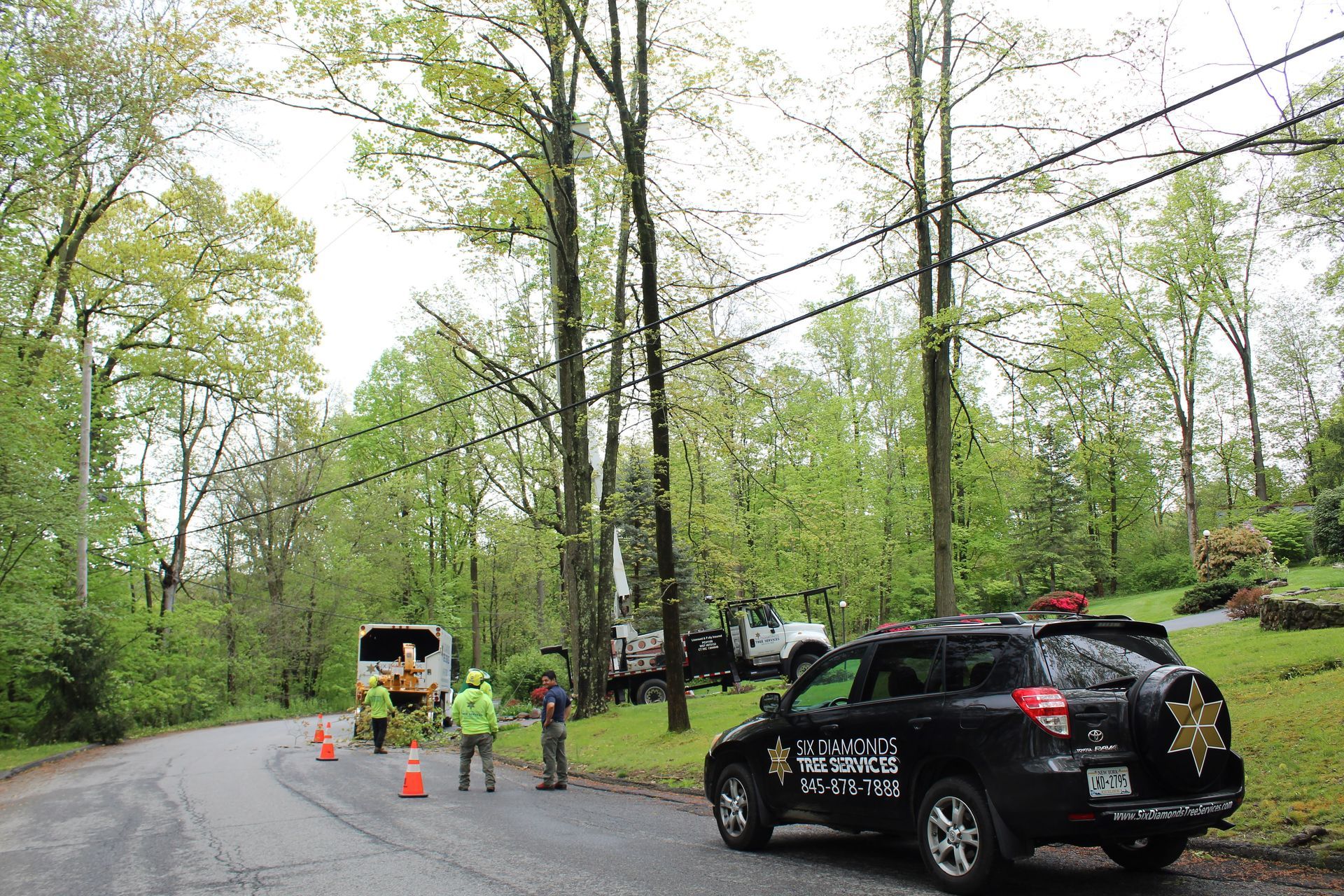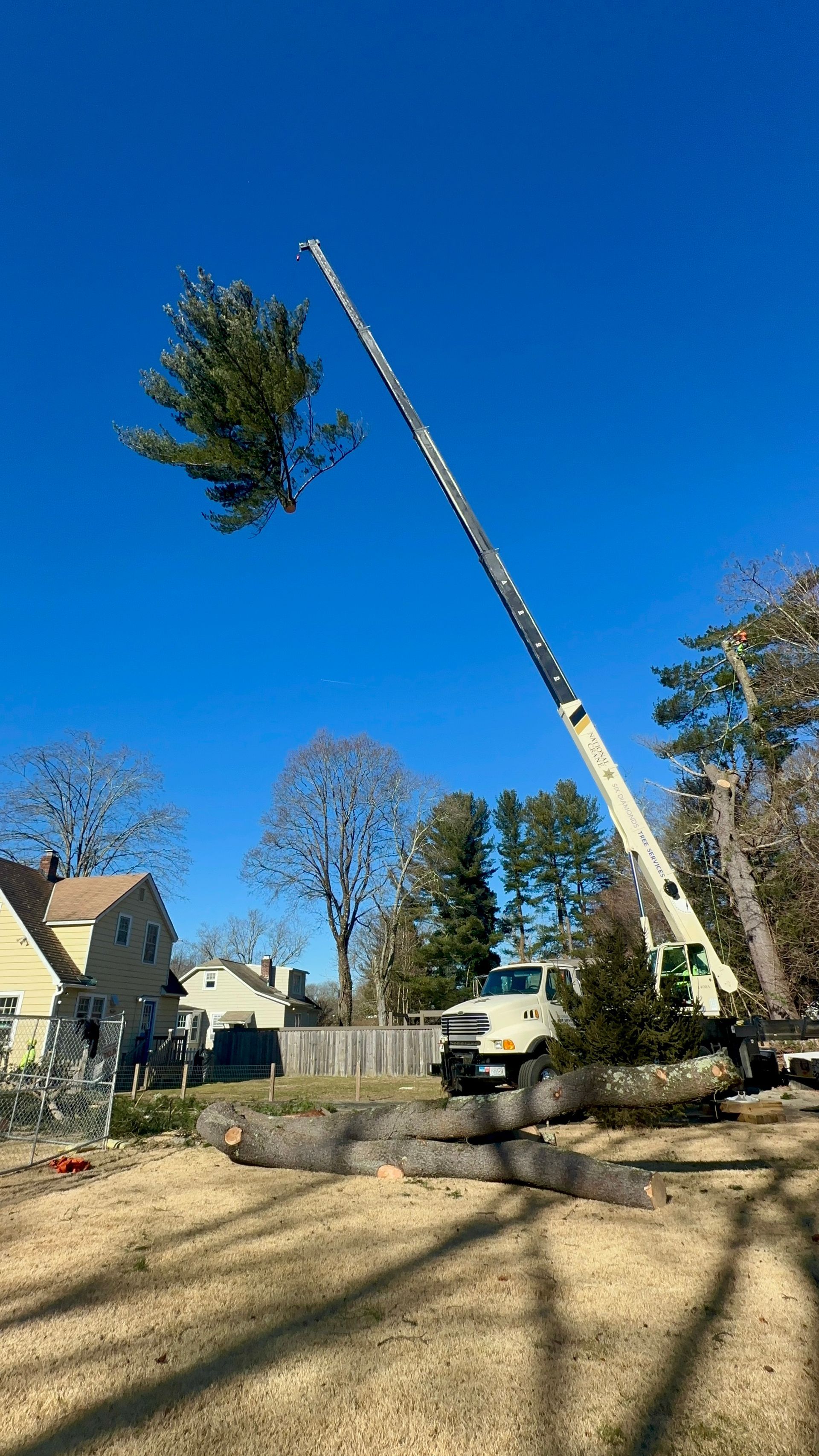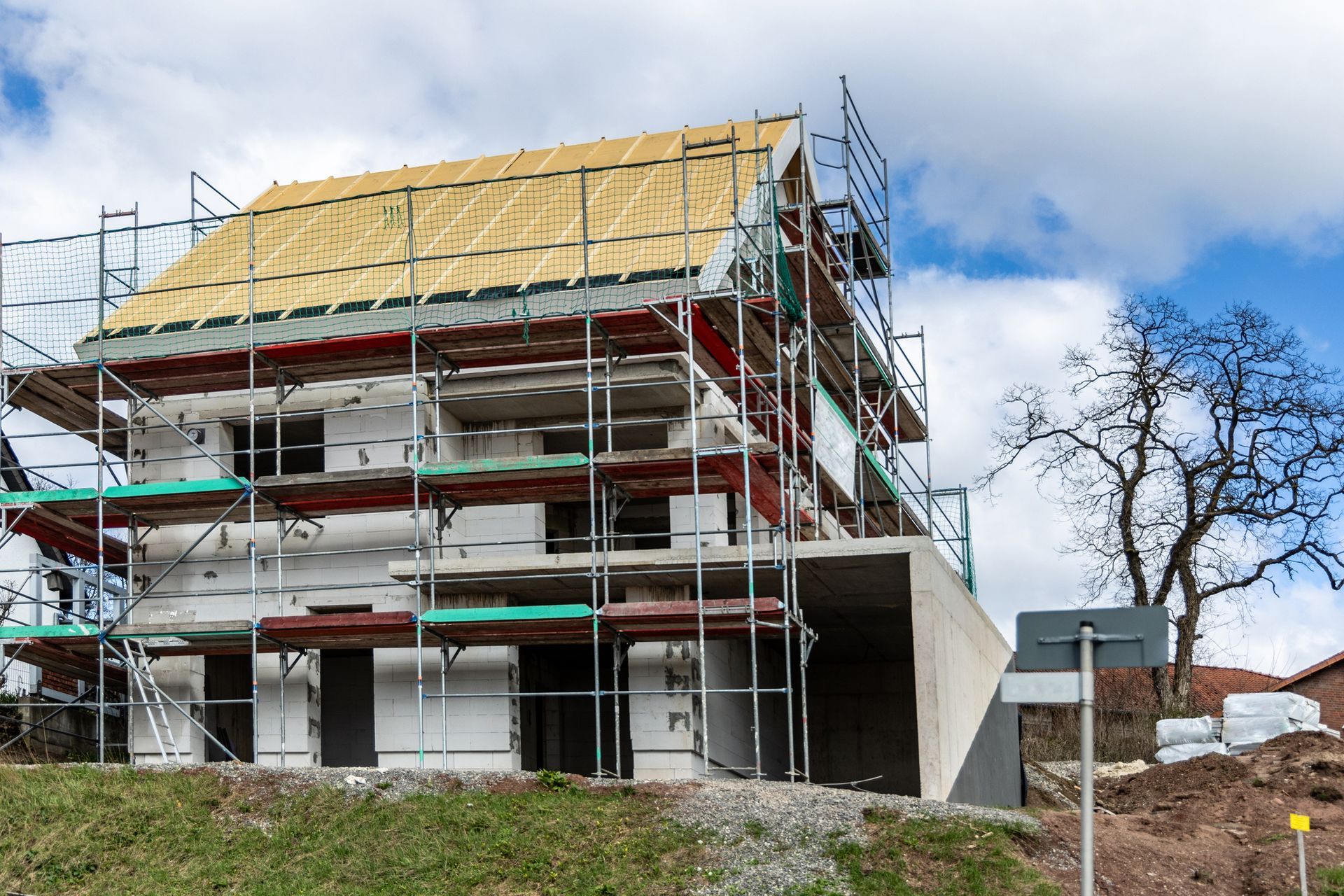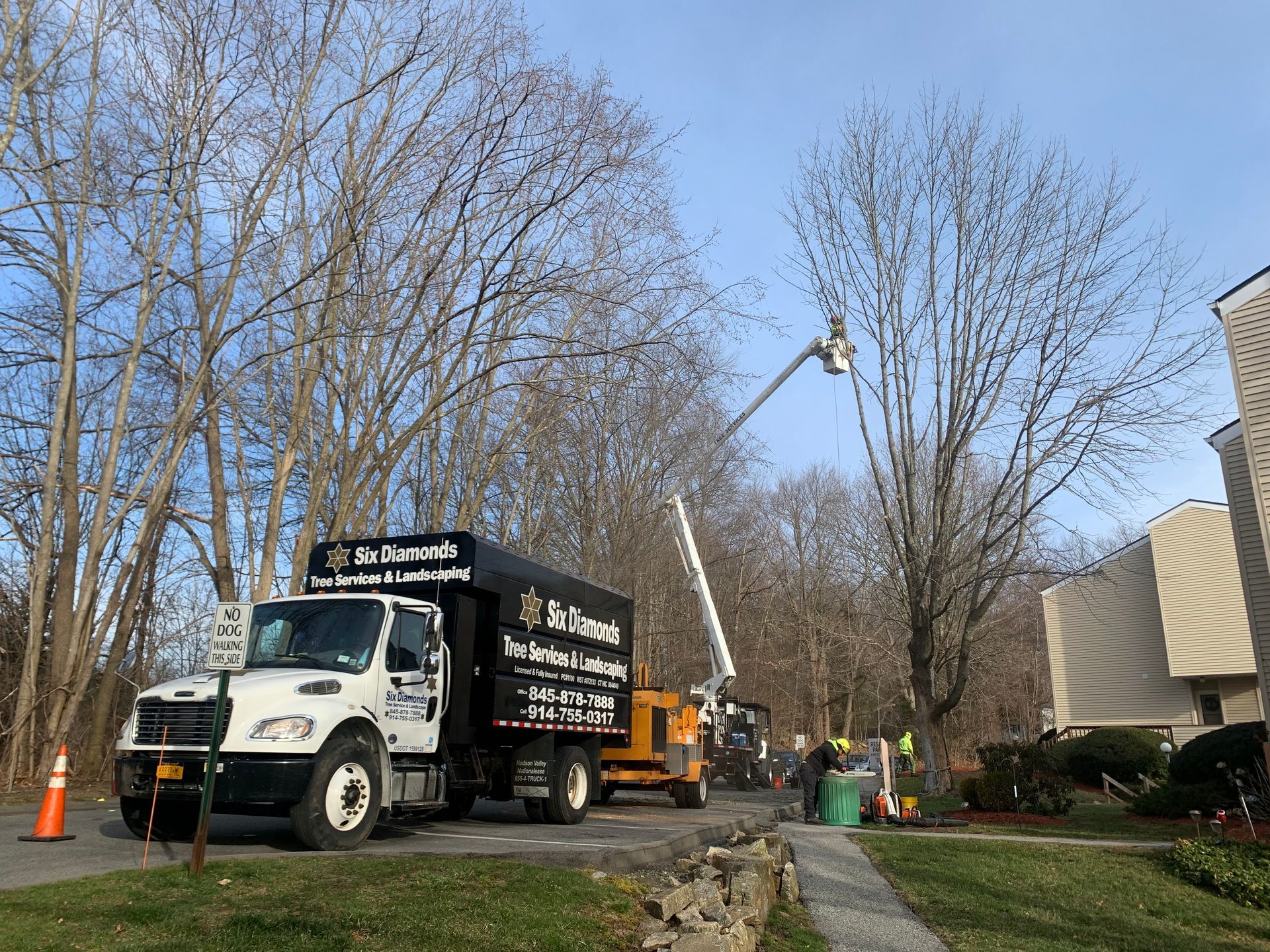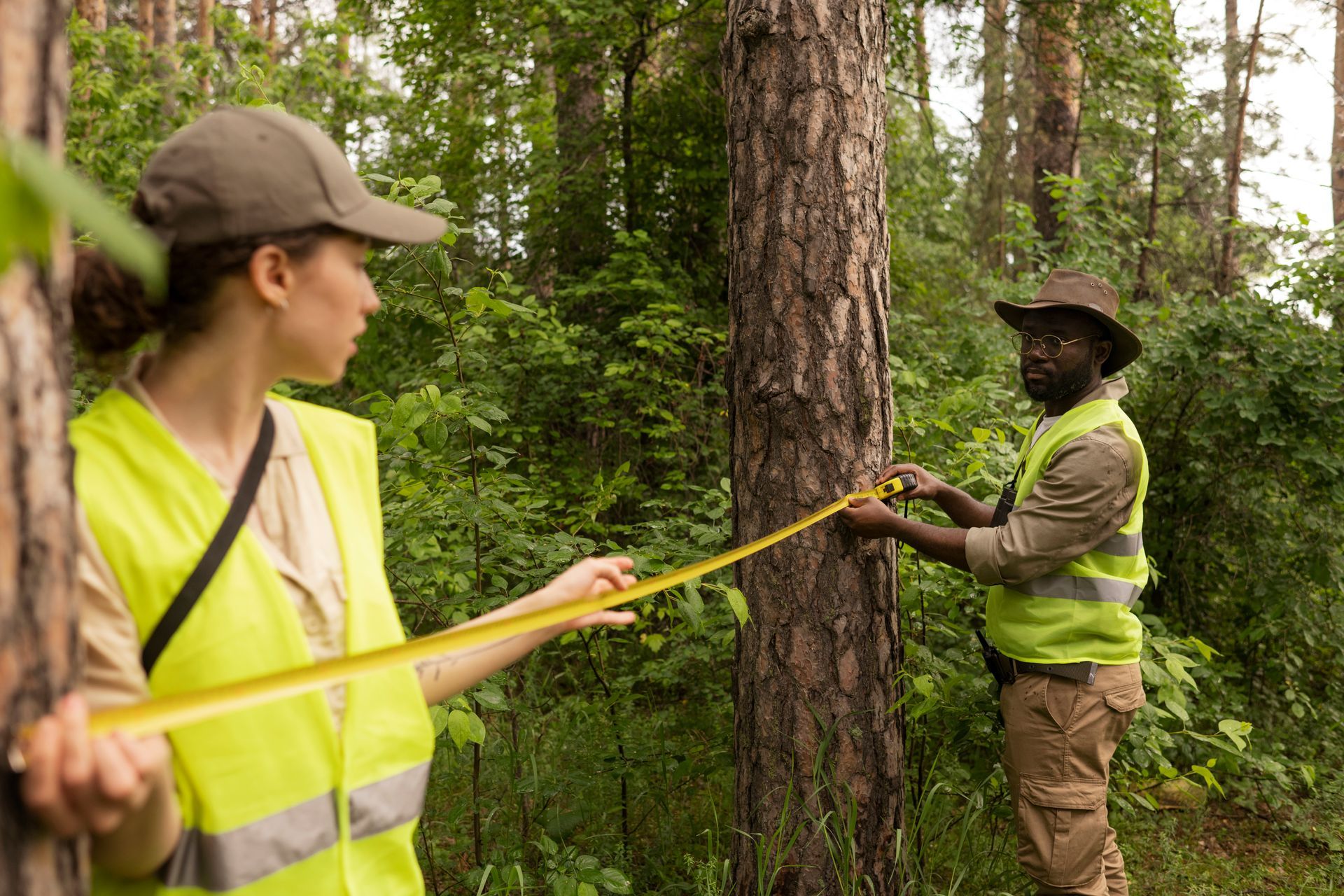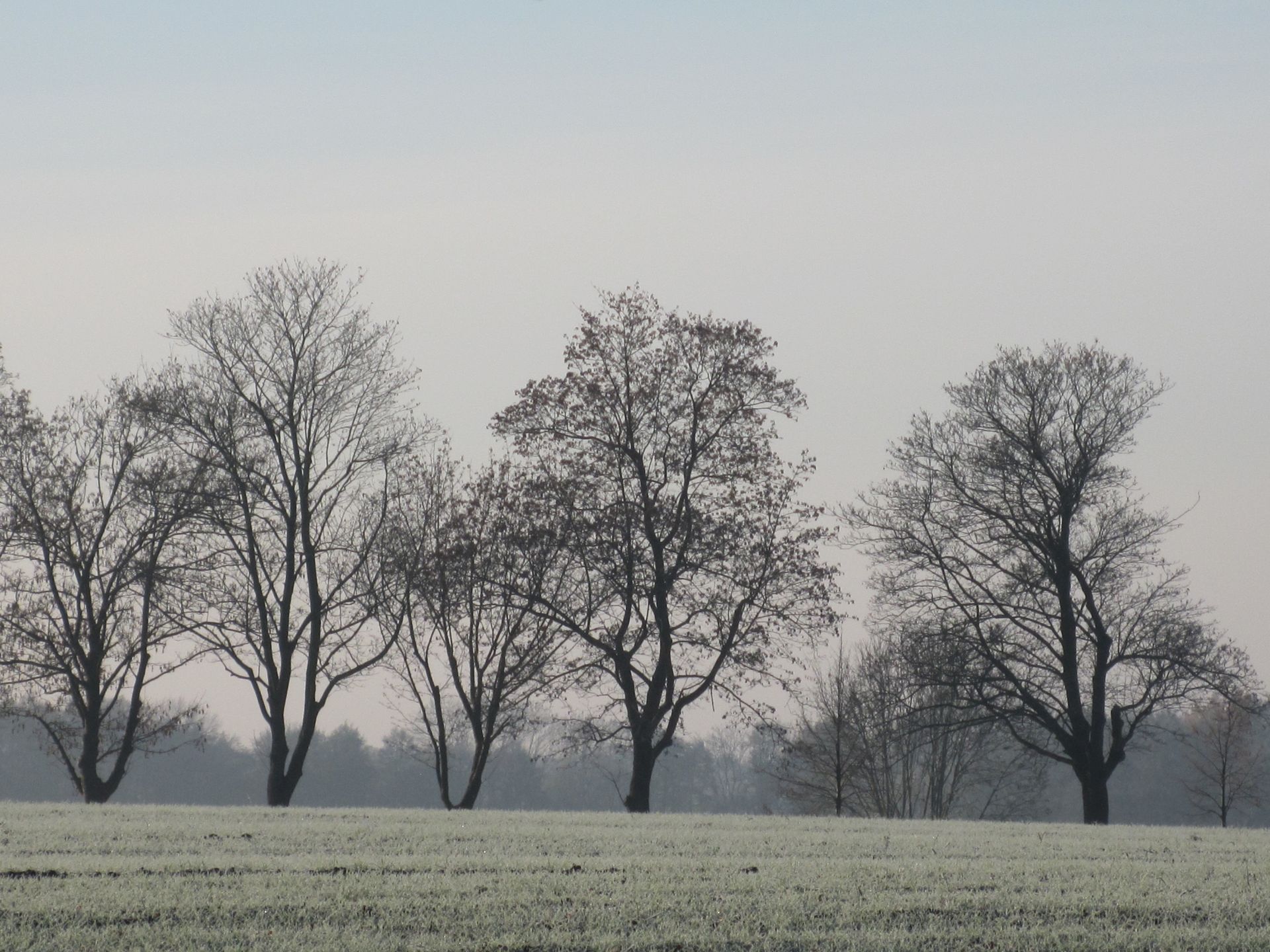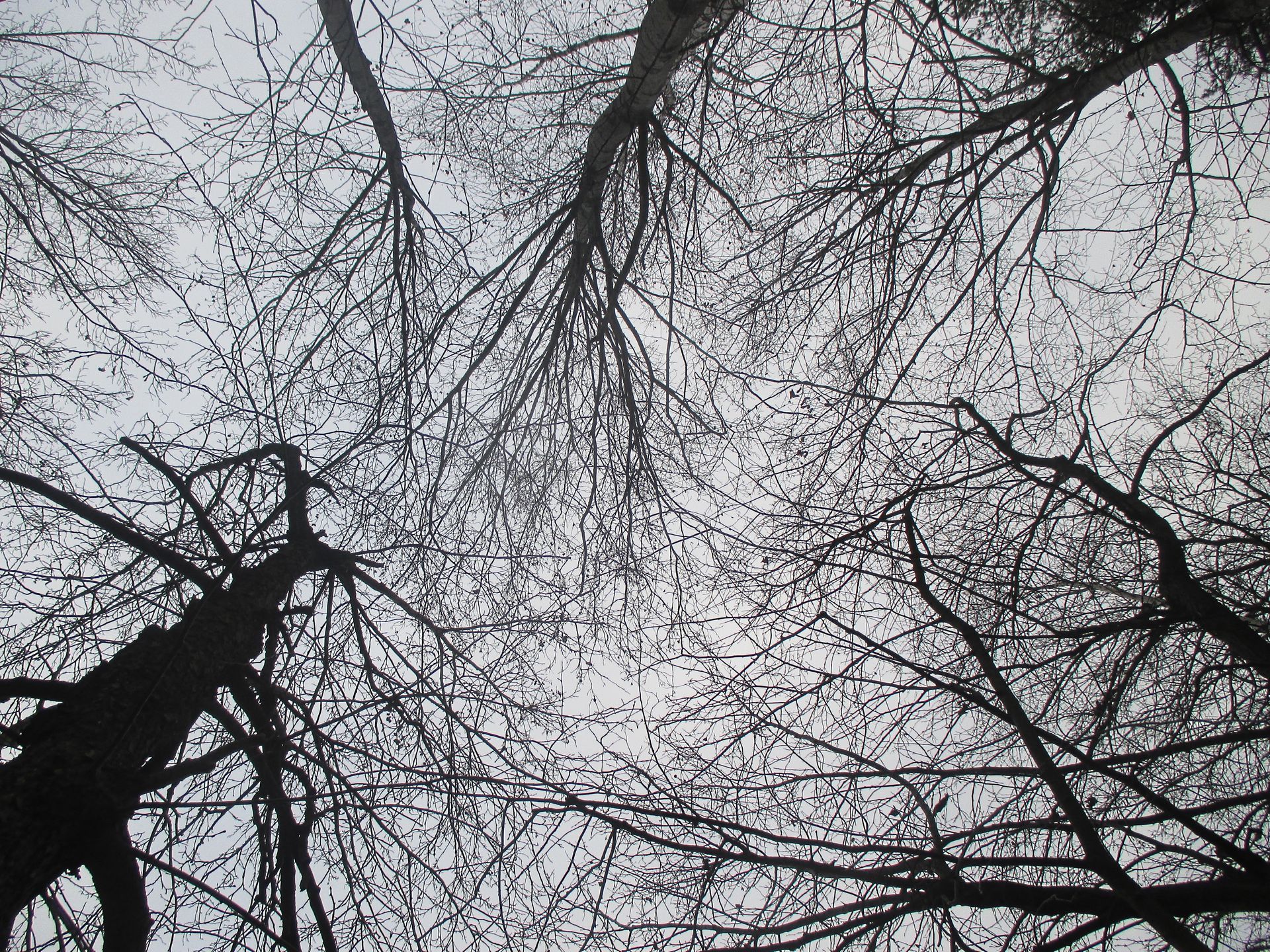Six Diamonds Tree Services, Inc

At Six Diamonds, we work hard every day to ensure that our customers, their families, and our staff are all safe from the dangers of falling trees. The damage from a falling tree could cost you a lot more money in the long run, and it can bring an emotional toll as well.
When we give our customers a free, no obligation estimate for tree removal, we look for a number of indicators that a tree may be in danger of falling.
Below are a few indicators to look for. Please use caution when inspecting your trees. If in doubt, give us a call.
- Location, location, location… Is the tree too close to your home, garage, or shed? If so, it may be causing moss to grow, which will decay shingles. Weak branches may also require pruning to prevent falling.
- Weak Tree Limbs: It’s hard to predict when a tree limb will fall, but there are some indicators to look for.
- A Leafless Limb when it should be in bloom is a big indicator that it is dead and more susceptible to coming down, particularly in wind and precipitation.
- If a tree has two equal sized limbs coming out from the trunk forming a “Y”, the union between the two could be weak and may not be able to support the weight of both.
- Both man-made and structural traumas to a tree, could have an impact. It could be a poor pruning or strong winds – both cause trees to develop hollow points, fractures, or splits that never heal properly. The limb could remain the same size but the fracture point will weaken eventually causing the limb to drop.
- Biological invaders such as mushrooms are usually an indicator that the tree is rotten inside.
- A hole in the trunk of the tree. A cavity can form in the trunk of a tree when the tree prunes itself by dropping a branch. That can lead to decay inside the tree, but not always. If there’s enough sound wood around the cavity, the tree probably won’t fall.
- My tree is missing bark or deep cracks. An area where tree bark is missing, gashed or indented is called a “canker”. A canker can make a tree more likely to break at that spot, even if the wood looks healthy. Deep cracks are also signs of possible decay.
- Dead or falling tree branches. When trees start dropping bits of branches or entire branches, it is likely telling you that something’s wrong. That is the tree’s natural way of making itself smaller to conserve its energy.
- Leaning tree trunk. It’s normal for some trees to tilt slightly as it grows. However, if a tree leans more than 15 degrees due to wind or root damage, it may be in danger of toppling over.
- My tree is losing leaves from the outside in. When a tree loses leaves in this pattern often it means something interfering with the roots’ ability to carry water and nutrients to the trunk. Without a healthy root system, a tree can fall more easily.
- Rotten tree roots. Root rot can be hard to spot. Look for mushrooms growing around the base of a tree. Fungi growing on the trunk can be another clue that the tree is rotting inside.
- Tight branch growth. When branches grow close together in a V-shape they are more susceptible to breaking than if they are in a U-shape. Elm, maple, oak, yellow poplar and willow trees tend to break at weak forks. This problem is easiest to spot in winter after the leaves have fallen off.
- Brittle Tree Species. Certain species of tree are more susceptible to limb drop than others. Some of the most brittle species include: Silver Maple, Lombardy Poplar, Box Elder, and Willows.
*Always use caution when walking around your trees!

